- Introduction to the Cold War
- Origins of the Cold War
- Early Cold War Conflicts
- The Space Race and Technological Competition
- Proxy Wars and Global Influence
- The Era of Détente
- Late Cold War Tensions
- Cold War Culture and Propaganda
- The Collapse of the Soviet Union and the End of the Cold War
- The Aftermath and Legacy of the Cold War
- Personal Stories of the Cold War
- Conclusion and Reflection
- Keywords
- Key Takeaways
- FAQ
- What was the “Red Scare”?
- Who were the Rosenbergs?
- What was the purpose of the U-2 spy plane?
- Why did the Soviet Union boycott the 1984 Los Angeles Olympics?
- What was the “Prague Spring”?
- What were the Sino-Soviet relations like during the Cold War?
- Who were the “non-aligned” countries?
- How did the Cold War affect Africa and Latin America?
- What was the “Kitchen Debate”?
- How did the Cold War end?
- Myths Debunked
- Myth: The Cold War began immediately after World War II.
- Myth: The U.S. and USSR were close allies during World War II.
- Myth: The Cold War was solely a U.S. vs. USSR conflict.
- Myth: The Space Race was just about landing on the Moon.
- Myth: Only the USSR built a wall to keep its citizens in.
- Myth: The Cuban Missile Crisis was the closest the world came to a nuclear war.
- Myth: The USSR was solely responsible for the start of the Cold War.
- Myth: The Cold War ended with the fall of the Berlin Wall.
- Myth: Everyone in the U.S. supported the government’s anti-communist stance.
- Myth: The Cold War was a purely political and military standoff.
- Test Your Knowledge
- Check out the Story of the Cold War Article Series
Introduction to the Cold War
In the aftermath of the tumultuous and destructive World War II, as the dust began to settle and nations commenced rebuilding, a new era dawned. This wasn’t just any epoch; it was one shrouded in political suspicion, clandestine operations, and the looming threat of nuclear annihilation. This era, marked by the ideological tussle between two superpowers, became popularly known as the Cold War.
Imagine a world rebuilding itself after witnessing the worst that humanity could unleash. Two nations, rising from the ashes of war, found themselves possessing significant influence and power. These were not just any nations; they were the United States of America and the Union of Soviet Socialist Republics.
The United States, with its gleaming skyscrapers and reputation as the land of dreams, was the birthplace of Hollywood and Jazz, a symbol of capitalist democracy. It was the nation that had entered the Second World War late but had played a decisive role in its conclusion. With its industrial powerhouses and booming economy, America had emerged not only unscathed but also as a global leader. On the other side, we had the Soviet Union, vast and mysterious, covering one-sixth of the Earth’s land surface. Led by its capital, Moscow, the USSR was a testament to the power of the state, where collective farms and huge factories ran under the banner of communism.
Post World War II, the old empires of Britain, France, and Germany were considerably weakened. Economies were in tatters, and they no longer held the mantle of global dominators. This void was not to remain unfilled. The United States and the Soviet Union, both having played pivotal roles during the war and both having largely avoided the devastation that had ruined other major powers, were ready to fill this void. But with power, came differences—stark differences in ideologies, economies, and ambitions.
While the world watched, these two behemoths circled each other, not in direct confrontation, but in a dance of political strategy and wits. It was a war, but not one fought with soldiers and tanks. It was a war of influence, of shadow games, and of ideologies. The stage was set, the actors in place, and the world was about to witness a confrontation that would shape the latter half of the 20th century. And this, dear reader, is where our tale of the Cold War begins.
Origins of the Cold War

As the final throes of World War II played out, the global map was being redrawn, not with borders alone but with strategies and intentions. The origins of the Cold War, like seeds in fertile soil, found root in the decisions made during pivotal meetings and profound speeches.
In the picturesque Crimean city of Yalta, 1945, a grand conference took place. The world’s most powerful leaders: Franklin D. Roosevelt of the USA, Winston Churchill of the UK, and Joseph Stalin of the USSR, gathered, their discussions veiled in secrecy. Together, they sought to shape post-war Europe, but it wasn’t just about peace; it was also about power. While they unanimously agreed on the unconditional surrender of Nazi Germany, the division of Europe post-war became a point of contention.
A few months later, another city played host. The Potsdam Conference, held near Berlin, continued where Yalta left off. By then, the war in Europe had ended, but new tensions were bubbling beneath the surface. The leaders, including the now President Truman who succeeded Roosevelt, tried to reach agreements. But the decisions, like dividing Germany and establishing reparations, only further set the stage for the brewing East-West divide.
Not long after, in a sleepy college town in Missouri, Winston Churchill, the Bulldog of Britain, made a speech that would echo through the annals of history. He spoke of an “Iron Curtain” descending across the continent, splitting it from “Stettin in the Baltic to Trieste in the Adriatic.” His words painted a picture of Europe, divided by an unseen but palpable barrier, marking the territories dominated by the Soviet Union.
The US, alarmed by the increasing Soviet influence, responded swiftly. President Truman unveiled the Truman Doctrine, pledging to support free peoples resisting subjugation by armed minorities or outside pressures. Essentially, it was a promise to counteract Soviet influence wherever it tried to spread. Then came the Marshall Plan, a masterstroke of diplomacy and generosity. Named after Secretary of State George Marshall, it proposed massive economic aid to war-torn Europe. The objective? Rebuild, revitalize, and thereby limit the allure of communism.
However, the Soviet Union was not to be outdone. They expanded their reach, consolidating power over Eastern European nations. Countries like Poland, East Germany, Hungary, and Czechoslovakia were not just allies but became part of what the West termed the ‘Eastern Bloc’. They became tightly woven into the fabric of the USSR’s political, economic, and military systems.
Thus, the stage was perfectly set. Two superpowers, two distinct ideologies, and a divided world. The pieces had moved, the board was set, and the longest game of the 20th century was in play. The Cold War had truly begun.
Early Cold War Conflicts

The years following World War II were not of quiet peace, but rather a deceptive calm, where under the surface, tensions bubbled and occasionally erupted. The Cold War might have been termed ‘cold’ because of the lack of direct military conflict between the superpowers, but that didn’t mean it lacked action.
Berlin, the iconic German city, was the first battleground. Though the war was over, its scars were palpable. The city, lying deep within Soviet-controlled East Germany, was a microcosm of the larger world tensions. It was divided into sectors controlled by the Allies: the US, the UK, France, and the USSR. However, by 1948, the Soviets sought to squeeze the Western Allies out of Berlin. They initiated a blockade, cutting off all road, rail, and water routes into the Western-controlled sectors of the city. Their intention? Force capitulation and take control.
But the Western Allies had a different plan. Instead of buckling, they launched one of history’s most significant humanitarian missions: the Berlin Airlift. For almost a year, planes took off and landed at intervals as short as three minutes, bringing food, fuel, and hope to the besieged citizens of West Berlin. This monumental effort broke the blockade, and by 1949, the Soviets relented, lifting their blockade.
Yet, the Berlin Blockade was just a symptom of a larger ailment. By 1949, recognizing the need for collective defense against potential aggression, the Western Allies formed the North Atlantic Treaty Organization, or NATO. An armed attack against one would be considered an attack against all. But the Soviets, ever vigilant, responded in kind in 1955 with their own alliance, the Warsaw Pact, encircling Eastern Europe in a military embrace.
While Europe was the primary stage for these political theatrics, Asia too had its part to play. The Korean Peninsula, previously occupied by Japan, was divided post-war with the North under Soviet influence and the South under American. But this temporary division soon became a volatile flashpoint. In 1950, North Korean troops, with Soviet equipment and tacit support, stormed into the South. What followed was a brutal conflict that drew in not only the Koreas but also major powers like the US, China, and the USSR. For three years, the Korean War raged, witnessing fluctuating fortunes and untold sufferings. And though an armistice was finally signed in 1953, it left the Peninsula divided to this day, a lasting legacy of the Cold War’s early conflicts.
This period, though just the beginning, set the tone for decades to come. Two superpowers, through proxies, alliances, and strategic maneuvers, jostling for influence and control in a world that watched with bated breath.
The Space Race and Technological Competition

Amid the swirling mists of political intrigue and terrestrial conflict, the gaze of two superpowers turned skyward. The vast, enigmatic expanse of space became the new frontier for the Cold War rivalry. But this was no mere exploration; it was a race. A race for dominance, for technological prowess, and for the hearts and minds of people across the world.
On a seemingly regular October day in 1957, the world awoke to the sound of a beep. This unassuming beep wasn’t from any device on Earth; it was from the cosmos. The USSR had successfully launched Sputnik, the first artificial satellite, into space. This achievement wasn’t just a display of Soviet scientific capability; it was a direct challenge. If they could send a satellite into space, what else could they achieve? The message was clear: the Soviets had taken an early lead in the Space Race.
The US, caught off-guard, responded with urgency. The subsequent launch of their own satellite, Explorer 1, in 1958 was more than just a retort; it marked the inception of NASA, the American space agency. The gauntlet was thrown, and the race escalated.
The moon, our celestial neighbor, soon became the ultimate prize. Both nations had their eyes set on it. The Soviets were the first to make a mark, literally, when Luna 2 crash-landed on the moon’s surface in 1959. They followed this with yet another first: Yuri Gagarin’s historic orbit around Earth in 1961.
But America was not to be left behind. In a moment that exemplified the ambition of this race, President John F. Kennedy proclaimed the audacious goal of sending an American to the moon and returning them safely before the decade’s end. This culminated in the Apollo program. In 1969, against a backdrop of global anticipation, Apollo 11 achieved what was once deemed impossible. Neil Armstrong and Buzz Aldrin walked on the moon, planting the American flag.
While the ‘race to the moon’ was the headline act, in the shadows, another competition was underway: technology. This race wasn’t just about space. The very technology that propelled rockets also had implications for ballistic missiles and defense capabilities. Satellites became vital not just for exploration but for communication, surveillance, and intelligence. This technological duel added a new dimension to the Cold War, shaping military strategies, diplomatic interactions, and, most importantly, the balance of power.
The Space Race, though filled with wonder and excitement, was, at its core, a manifestation of the Cold War’s core dynamics. A contest between two ideologies, two ways of life, played out not just on the world stage, but amongst the stars.
Proxy Wars and Global Influence
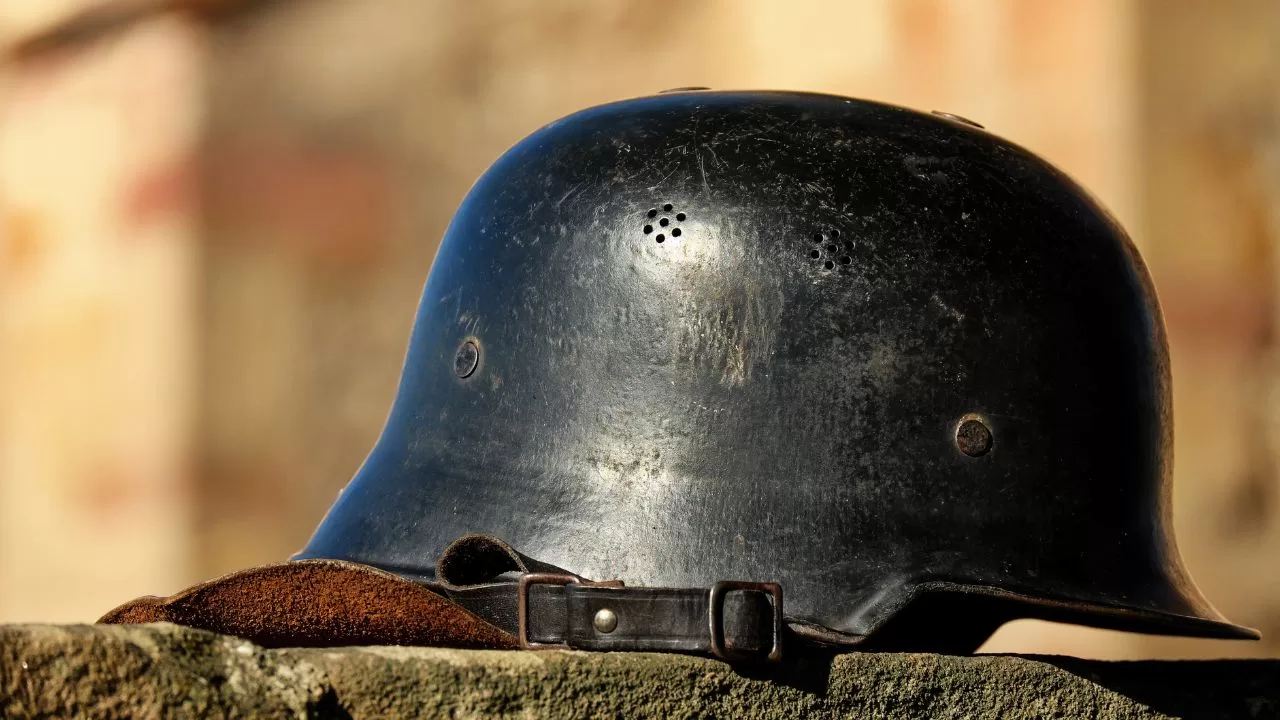
While the heavens echoed with the roars of rockets, back on Earth, the Cold War was being fought in a different, more visceral manner. Instead of direct confrontations between the superpowers, much of the Cold War’s deadliest combat occurred elsewhere, in distant lands, as proxy wars. These conflicts were battlegrounds where the ideologies of the West and the East vied for dominance, each side sponsoring factions that aligned with their beliefs.
The dense jungles and sprawling rice fields of Vietnam became one of the most significant theaters for this ideological struggle. The Vietnam War, which spanned from the mid-1950s to 1975, saw North Vietnam and its communist allies pitted against South Vietnam and its principal supporter, the United States. The North, bolstered by the USSR and China, aimed to unify the country under communist rule. The South, backed by the US and other Western nations, resisted this push. This conflict wasn’t merely a civil war; it was a symbolic confrontation between communism and democracy. The implications were vast. The US saw the war as a part of the broader strategy of containment — halting the spread of communism. However, despite superior military technology and vast resources, the quagmire proved too intricate, and the US faced a painful, tumultuous exit, reshaping its foreign policy approach.
Meanwhile, closer to American shores, the island nation of Cuba became another hotspot. The Cuban Revolution of 1959 saw the charismatic Fidel Castro overthrow the Batista regime, quickly aligning the nation with the Soviet bloc. Concerned by a communist nation just 90 miles off its coast, the US plotted to overthrow Castro. This culminated in the infamous Bay of Pigs invasion in 1961. American-backed Cuban exiles attempted to initiate a counter-revolution, but the plan failed spectacularly, further strengthening Castro’s position and deepening the chasm between Havana and Washington.
However, the real crescendo of the Cold War arguably occurred a year later, in 1962. The world held its breath as the Cuban Missile Crisis unfolded. Soviet missiles, capable of carrying nuclear warheads, were discovered in Cuba by American reconnaissance. This was a direct threat to the US, putting major cities within striking range. A tense 13-day standoff ensued, with both superpowers on the precipice of nuclear war. Diplomacy, back-channel communications, and strategic maneuvering finally led to the missiles’ removal in exchange for the US promising not to invade Cuba and secretly removing missiles from Turkey. This brush with catastrophe forced both nations to recognize the potential consequences of their rivalry, leading to improved communication lines like the Moscow-Washington hotline.
These proxy wars and events, while localized, bore global ramifications. They showcased the Cold War’s expansive nature, where local conflicts carried the weight of global ideologies, and where regional leaders played their parts in a much larger, more intricate game of chess between two superpowers.
The Era of Détente

After years of heightened tensions and near cataclysmic confrontations, both superpowers began to sense the unsustainable nature of their rivalry. This realization marked the beginning of the era of détente, a French term meaning a “relaxation of tensions”. While the ideological differences remained, there was an understanding that some form of coexistence was essential for global survival.
Central to détente were the Strategic Arms Limitation Talks, known as SALT. In the backdrop of an escalating arms race, where both superpowers amassed vast arsenals of nuclear weapons, SALT I and II became the cornerstones of nuclear arms control. Initiated in 1969 and culminating in 1972 with the signing of the SALT I agreement, both nations committed to cap the number of ballistic missile launchers. SALT II, signed in 1979, sought to limit other aspects of their nuclear capabilities. Though controversial and faced with domestic opposition in both countries, these agreements symbolized a mutual acknowledgment of the dangers of unchecked nuclear competition.
While arms control was a pivotal aspect of détente, geopolitics wasn’t far behind. A surprising and transformative event of this era was US President Richard Nixon’s visit to China in 1972. At a time when the US and China had no formal diplomatic ties and deeply entrenched suspicions, this visit was nothing short of revolutionary. By forging a new relationship with Beijing, the US aimed to exploit the existing Sino-Soviet rift, subtly tilting the balance of power. Nixon’s visit, replete with toasts, tours of historical sites, and intense negotiations, didn’t just reshape US-China relations; it reconfigured the geopolitical landscape, adding complexity to the bipolar Cold War dynamics.
Then, in 1975, came the Helsinki Accords. These weren’t about arms or alliances but values and human rights. Thirty-five nations, including the US, the USSR, and most of Europe, came together in Finland’s capital, Helsinki, to sign the Final Act of the Conference on Security and Co-operation in Europe. This document, while recognizing European borders, emphasized respect for human rights and fundamental freedoms. It was an acknowledgement that security wasn’t just about weapons and armies, but about societies, values, and mutual respect.
The era of détente, however, wasn’t a straight path to harmony. There were bumps and reversals, moments of suspicion, and underlying rivalries. But what it underscored was the evolving nature of the Cold War. In the shadow of near-apocalyptic scenarios, both superpowers began to understand that rivalry had its limits, and survival, in many ways, depended on finding common ground.
Late Cold War Tensions
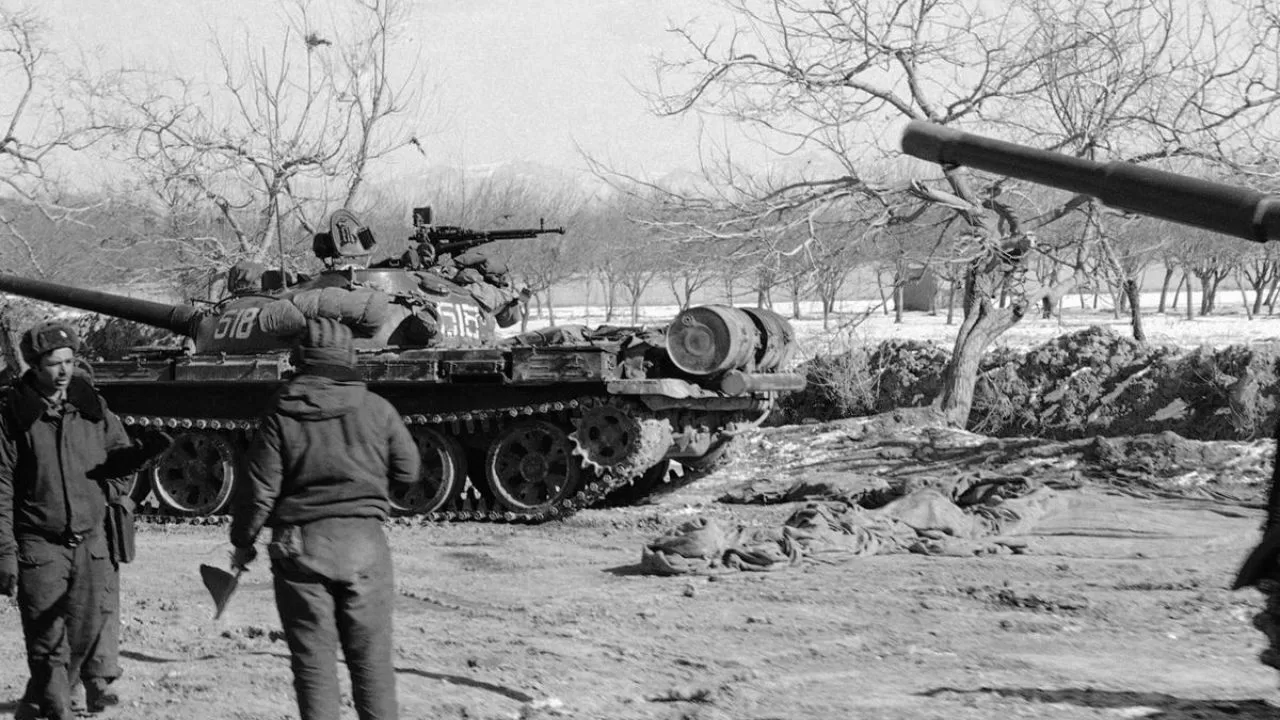
While détente aimed to cool the fires of the Cold War, the embers of competition and mistrust never truly died out. The final decade of the 20th century saw a resurgence of tensions, signaling that the geopolitical rivalry was far from over.
In 1979, a seismic event shifted the tectonic plates of the Cold War landscape: the Soviet invasion of Afghanistan. The USSR, fearing the rise of an anti-communist regime on its southern border, intervened militarily to support the communist government in Kabul. However, this move was not just a regional play. To the West, it appeared as a bold Soviet push into the heart of Asia, potentially threatening global balances. The US, under President Jimmy Carter, saw it as a challenge that could not go unanswered. Beyond condemning the invasion, the US, along with allies like Pakistan and Saudi Arabia, began covertly supporting the Mujahideen, Afghan resistance fighters, in their guerrilla war against Soviet forces. The Afghan conflict, often dubbed the “Soviet Union’s Vietnam,” became a grinding and costly engagement for Moscow.
As the 1980s dawned, the atmosphere of détente further evaporated with the entry of a new player on the American stage: Ronald Reagan. The 40th president of the US, Reagan viewed the Soviet Union through a more confrontational lens. This perspective crystallized in 1983 when he famously labeled the USSR as the “Evil Empire,” stoking the fires of ideological rivalry. Concurrently, Reagan initiated a significant arms buildup, emphasizing the development of strategic defense initiatives, popularly known as “Star Wars.” This approach aimed to ensure that the US maintained, if not extended, its technological and military edge over the Soviets.
Meanwhile, in the heart of Europe, a grassroots movement was stirring, further challenging Soviet hegemony. In the shipyards of Gdansk, Poland, the Solidarity labor movement was born. Led by the charismatic electrician Lech Walesa, Solidarity wasn’t just about workers’ rights. It became a beacon of resistance against Soviet-imposed communist rule. Its broad-based appeal and non-violent approach galvanized millions across Poland and caught the attention of the world. While the Polish government, under Soviet pressure, attempted to suppress the movement, including by imposing martial law in 1981, the genie was out of the bottle. The seeds for a broader Eastern European push for freedom were sown.
This period of the Cold War, characterized by renewed tensions, showcased that the struggle between the superpowers was deeply embedded in global events. Whether in the rugged mountains of Afghanistan, the speeches of world leaders, or the shipyards of Gdansk, the ideological and strategic battle raged on, setting the stage for the dramatic events of the subsequent decade.
Cold War Culture and Propaganda
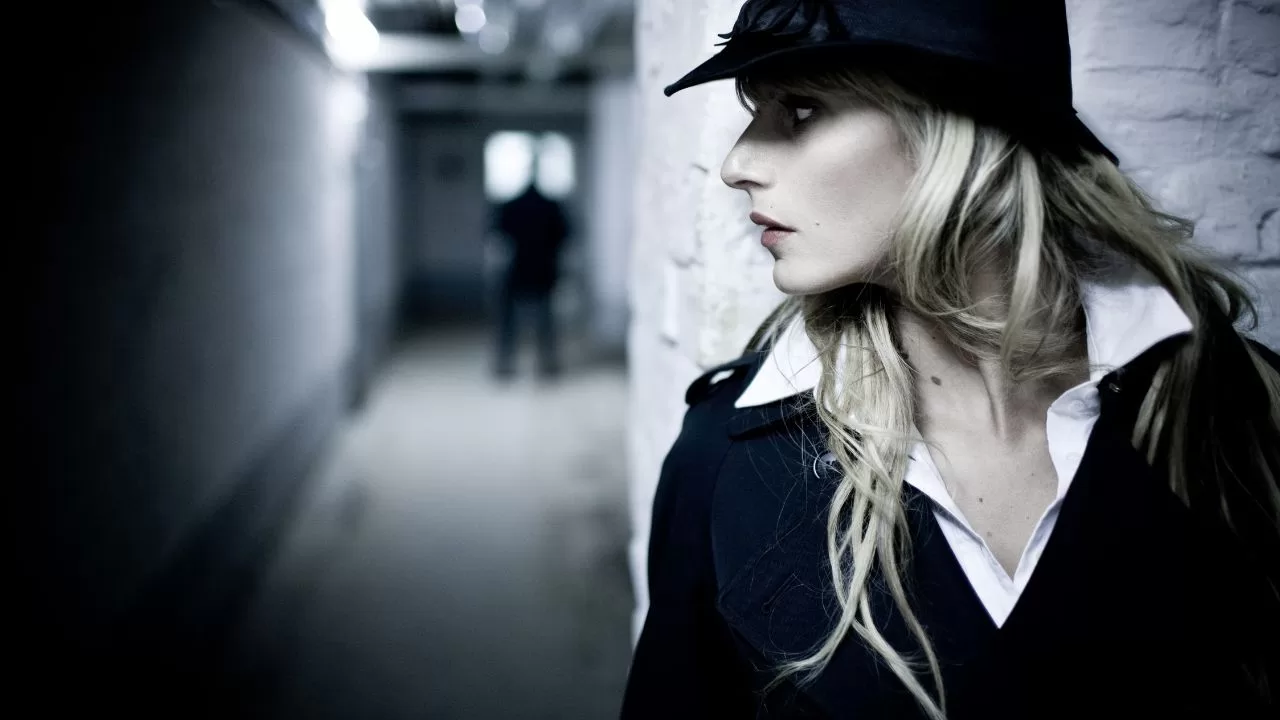
Beyond the political maneuvers and military standoffs, the Cold War was also a battle of perceptions and ideologies, vividly played out in the realm of culture and propaganda. The superpowers recognized early on that the hearts and minds of their own citizens, as well as those of neutral and aligned countries, were as crucial as any battlefield.
Media became one of the most potent weapons in this battle of narratives. In the US, the image of the Soviet Union was often that of a monolithic, oppressive state, where individual freedoms were squashed under the weight of communism. Newspapers, television, and films frequently depicted the Soviets as the archetypical “bad guys,” reinforcing the fear and mistrust of the ‘Red Menace.’ In contrast, Soviet media portrayed the US as an imperialistic power, driven by capitalism’s insatiable greed, perpetuating inequality and social unrest. The capitalist ‘decadence’ was juxtaposed with the ‘virtuous’ and ‘egalitarian’ ideals of communism.
Yet, amidst this backdrop of mutual suspicion, there were sporadic yet impactful moments of cultural exchange. Artists, musicians, and writers from both sides visited each other’s countries, showcasing the richness of their respective cultures. Jazz, a quintessentially American art form, found enthusiastic audiences in the USSR. Similarly, Russian classical music and ballet were celebrated on American stages.
Sports, particularly the Olympics, became another theater of Cold War competition. The Games weren’t just about individual or team achievements; they were symbolic contests between the East and the West. The 1980 Moscow Olympics and the 1984 Los Angeles Olympics saw tit-for-tat boycotts by the superpowers, underlining how deep the Cold War had permeated global culture. Yet, at the same time, the Olympics also provided moments of unity and camaraderie between athletes of different nations, subtly defying the rigid boundaries of geopolitics.
The Cold War era also saw the rise of a genre that tantalized audiences worldwide: spy tales. Espionage, while a genuine and critical aspect of the superpower rivalry, became a staple of popular culture. Fictional characters like James Bond, with his suave British charm, took on nefarious villains, often with Eastern European accents. These tales, while often exaggerated, weren’t entirely detached from reality. Stories of real-life spies, double agents, covert operations, and intricate intelligence games frequently surfaced, blurring the lines between fiction and fact.
In essence, the cultural front of the Cold War was a complex tapestry. It was interwoven with strands of propaganda, genuine artistic exchange, competitive fervor, and tales of shadowy intrigue. Together, they created a vibrant, if sometimes unsettling, panorama reflecting the times’ hopes, fears, and dreams.
The Collapse of the Soviet Union and the End of the Cold War

The twilight years of the 20th century witnessed a series of whirlwind events that few had predicted but would reshape the world order dramatically. The Cold War, a seemingly endless game of chess between two superpowers, was reaching its denouement, not with a bang, but with the resounding chorus of people demanding change.
At the heart of this transformation was a leader unlike any the Soviet Union had seen before: Mikhail Gorbachev. Ascending to the Soviet Union’s helm in 1985, Gorbachev was acutely aware of the USSR’s internal challenges: a stagnating economy, rampant corruption, and a growing sense of disillusionment among the populace. He believed that for the Soviet Union to survive and thrive, it needed profound reforms. And so, Gorbachev introduced two groundbreaking policies: Glasnost (“openness”) and Perestroika (“restructuring”). Glasnost aimed to provide greater freedoms of expression and transparency in government, allowing for criticism and open discussions. In contrast, Perestroika sought to overhaul the Soviet economic system, introducing elements of market economics and decentralizing control.
But the ripples of these reforms went far beyond what Gorbachev had anticipated. As the press became more open, stories of government corruption, the harsh realities of Soviet history, and the drawbacks of the system flooded in, stoking the fires of public discontent. Moreover, the nationalities within the vast Soviet Union, suppressed for decades, began clamoring for greater autonomy and, in some cases, complete independence.
The most symbolic manifestation of this yearning for freedom came in November 1989 with the fall of the Berlin Wall. This concrete barrier, which had divided East and West Berlin for 28 years, stood as a poignant representation of the Iron Curtain that separated East and West Europe. The scenes of jubilation, with Germans from both sides tearing down the wall with hammers and chisels, echoed worldwide. It wasn’t just the fall of a wall; it was the crumbling of an ideology.
This momentum proved unstoppable. Throughout Eastern Europe, governments that had been Soviet satellites for decades were ousted in quick succession. The Warsaw Pact, the military alliance that had once challenged NATO, began to disintegrate.
By December 1991, the unimaginable happened: the dissolution of the Soviet Union itself. Republics that had been integral parts of the USSR declared independence one after the other. On December 25th, Gorbachev resigned as president, and the Soviet flag lowered for the last time, replaced by the Russian tricolor.
The Cold War, a decades-long confrontation that had cast a long shadow over global affairs, had come to an end. Not by nuclear confrontation or a decisive battle but by the inherent pressures and contradictions of the systems, and most crucially, by the indomitable spirit of people seeking change. The world stepped into a new era, with hope, uncertainties, and the lessons of the past to guide its path.
The Aftermath and Legacy of the Cold War
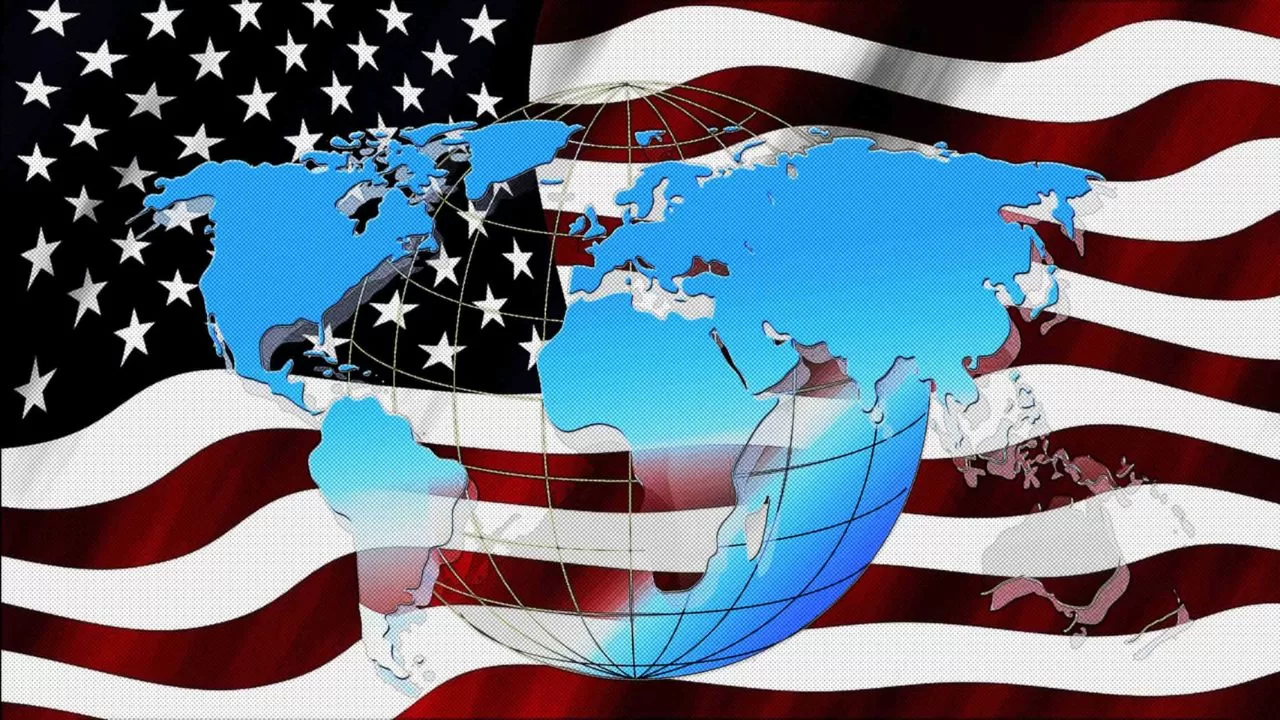
In the wake of the Cold War’s end, a new world began to take shape. The bipolar equilibrium, which had defined international relations for nearly half a century, dissolved, giving way to fresh dynamics and power structures.
At the forefront was the emergence of the United States as the world’s sole superpower, marking the beginning of what many termed a ‘unipolar’ moment. With the USSR disbanded, the US’s political, economic, and cultural influence stretched even more broadly across the globe. This unparalleled dominance led to the spread of liberal democratic values, market-oriented economies, and, in many places, a genuine hope for a peaceful “end of history,” as famously posited by political scientist Francis Fukuyama. He suggested that liberal democracy might constitute the endpoint of mankind’s ideological evolution.
Yet, as with all vacuums, the space left by the Soviet Union’s dissolution didn’t remain unfilled for long. New regional powers began to rise, asserting their influence. China, embarking on its ambitious journey of economic reform, started to make its weight felt on the world stage. European nations sought deeper integration, eventually giving birth to the European Union as a significant political and economic entity.
The aftermath of the Cold War also saw the formation of new alliances and, unfortunately, the ignition of fresh conflicts. The North Atlantic Treaty Organization (NATO), initially formed as a counterweight to the Soviet threat, began to expand its membership, incorporating former Warsaw Pact members and even Baltic states that were once part of the Soviet Union. This eastward push was viewed with suspicion and concern in Moscow, sowing seeds for future tensions.
Regions that had once been Cold War battlegrounds, like the Middle East, underwent significant changes. With the superpower rivalry no longer a dominant factor, longstanding regional disputes and rivalries came to the fore, sometimes erupting into open conflict.
Reflecting on the Cold War’s legacy, a few crucial lessons and takeaways emerge. First, while ideological and geopolitical rivalries can shape global dynamics, they can also mask underlying issues and tensions, which may resurface once the larger contest subsides. Second, the importance of diplomacy and open dialogue is paramount. The Cold War saw moments where the world teetered on the brink of catastrophic conflict, and it was often diplomacy, backchannel communications, and mutual understanding that pulled it back.
Lastly, the Cold War serves as a testament to the human spirit’s resilience. Despite living under the specter of nuclear annihilation, generations across the globe continued to strive for a better future, whether by pushing for civil rights, advocating for disarmament, or simply forging bonds that transcended national and ideological boundaries.
As the world navigates the challenges of the 21st century, the Cold War’s memories remind us of the complexities of global politics, the impermanence of power structures, and the enduring hope that humanity can avert disaster and strive for a better tomorrow.
Personal Stories of the Cold War

The Cold War, while often defined by its overarching political and military narratives, was deeply personal for millions who lived through it. Their stories, colored by the East-West divide, offer intimate insights into an era marked by tension, hope, and change.
Svetlana, a Schoolteacher from Moscow: Growing up in the Soviet Union, Svetlana recalled the pride she felt during the space race, especially when Yuri Gagarin became the first man in space. Yet, amidst these feats, there was an ever-present unease. Drills for potential nuclear attacks were routine at her school, with children practicing taking cover under desks. Yet, the fear never entirely overshadowed the pride she felt in her nation’s achievements, or the simple joys of family gatherings and listening to forbidden Beatles records on a hidden radio.
Jack, a US Army Veteran: Stationed in West Germany in the 1980s, Jack was acutely aware that he was on the front lines of a potential conflict. The Berlin Wall was a stark reminder of the divided world he lived in. Despite the tension, there were moments of shared humanity. He fondly remembered soccer games with German locals and even occasional friendly exchanges with East German guards during joint patrols.
Min-jung, a North Korean Defector: Min-jung’s tale is one of both despair and hope. As a young woman in North Korea, she was indoctrinated with propaganda about the ‘imperialist West.’ Yet, as famine gripped the country in the 1990s, she began to question the regime. A harrowing journey led her through China and Southeast Asia, before she finally found asylum in South Korea. Today, she’s a voice for human rights and advocates for those she left behind.
Eva, a Hungarian Revolution Survivor: Eva was just a teenager during the Hungarian Revolution of 1956. Inspired by stories of Western freedoms, she and her friends took to the streets demanding change. But Soviet tanks soon rolled into Budapest, crushing the uprising. Eva spoke of the heartbreak of watching friends get arrested or even killed. Yet, she also told tales of resilience, of covert radio stations, and of the secret distribution of leaflets.
Thomas, a British Spy: Recruited by MI6 in the 1970s, Thomas operated in East Berlin. His life was one of subterfuge, using a myriad of disguises and coded messages. While he couldn’t share all his secrets, he reminisced about the camaraderie among fellow agents and the adrenaline of evading Stasi surveillance.
For every high-level diplomatic negotiation or missile test, there were millions of individual stories unfolding daily. People fell in love across borders, families were divided by walls, and children grew up with mixed feelings of fear and optimism. The tales of defectors, spies, and everyday citizens alike serve as a poignant reminder that behind every historical event, there are human lives, dreams, and hopes. Their experiences give depth to our understanding of the Cold War, painting a rich tapestry of an era that shaped the modern world.
Conclusion and Reflection
As the sun set on the Cold War era, the world breathed a collective sigh of relief. However, the shadows cast by that monumental standoff continue to influence today’s geopolitical landscape. Decades may have passed, but remnants of Cold War thinking, both overt and subtle, still ripple through global politics, alliances, and even cultural expressions.
The post-Cold War world finds itself in a complex web of interdependence, with economies, technologies, and cultures more intertwined than ever. Yet, Cold War-era suspicions occasionally resurface, whether in the caution with which NATO members eye Russian maneuvers or in the delicate dance of power politics in the Asia-Pacific, evoking memories of past US-China tensions. It is a testament to how deeply ingrained some Cold War attitudes became, serving as cautionary tales of the lasting impact of prolonged ideological conflict.
From this intricate past, several lessons emerge for future generations. Chief among them is the intrinsic value of diplomacy. The close brushes with catastrophe during events like the Cuban Missile Crisis underscore the importance of open channels of communication, even amidst deep-seated mistrust. The world learned, albeit the hard way, that when two giants spar, it’s the grass beneath that suffers most. This realization places a premium on diplomatic overtures, multilateral dialogue, and conflict resolution mechanisms.
The stories, both grand and personal, from the Cold War era, also underscore the danger of viewing the world through a purely binary lens. Us versus them. East versus West. Such divisions, while providing a semblance of clarity, can mask the nuanced realities and shared human experiences that transcend borders and ideologies. They remind us that behind the face of an ‘enemy’ are individuals with hopes, dreams, and fears remarkably similar to our own.
In our increasingly globalized world, understanding has become both a moral imperative and a practical necessity. As nations grapple with global challenges, from climate change to pandemics, cooperation is not just ideal – it’s essential. The Cold War, with its stark divisions and dangerous escalations, serves as a poignant reminder of the costs of rivalry and the dividends of peace.
In concluding our reflection on this era, it’s clear that while the Cold War might be a chapter of the past, its lessons are very much a compass for the future. A guidepost urging caution against division, advocating for dialogue, and emphasizing the shared human spirit that binds us all.
Keywords
- Cold War: (noun) A period of political tension and military rivalry between the United States and its allies on one side, and the Soviet Union and its allies on the other, from the end of World War II until the early 1990s. No direct major conflicts occurred between the two superpowers, but they engaged in various proxy wars worldwide.
- Superpower: (noun) A highly powerful and influential nation, particularly one capable of influencing international events and the acts and policies of less powerful nations.
- Iron Curtain: (noun) A term popularized by Winston Churchill to describe the division between the Communist nations of Eastern Europe and the non-Communist nations of the West during the Cold War.
- Truman Doctrine: (noun) A US policy established in 1947 to provide economic and military aid to countries resisting Communist aggression.
- Berlin Blockade: (noun) A Soviet move in 1948-1949 to cut off Allied access to West Berlin, hoping to force the Allies out of the city. It was countered by the Berlin Airlift.
- NATO (North Atlantic Treaty Organization): (noun) A military alliance formed in 1949 by the North Atlantic nations to counteract potential aggression from the Soviet Union.
- Sputnik: (noun) The first artificial satellite to be put into Earth’s orbit. It was launched by the Soviet Union in 1957 and marked the start of the space age and the U.S.-U.S.S.R space race.
- Proxy Wars: (noun) Conflicts between two global or regional powers, not directly against each other, but against opposing smaller groups or states that they support. These were common during the Cold War.
- Détente: (noun) A French term meaning “easing of tensions.” Refers to a period in the 1970s when the U.S. and the U.S.S.R tried to relax tensions through diplomacy.
- SALT (Strategic Arms Limitation Talks): (noun) Negotiations between the U.S. and the U.S.S.R. to limit the number of strategic arms each nation possessed.
- Espionage: (noun) The practice of spying or using spies to gather information about the plans and activities, especially of a foreign government.
- Glasnost: (noun) A Soviet policy of open discussion of political and social issues, initiated by Gorbachev in the 1980s.
- Perestroika: (noun) A Soviet policy of democratic and free-market reforms introduced by Gorbachev in the late 1980s.
- Unipolar: (adjective) Describing a world dominated by a single superpower or country.
- Hegemony: (noun) Leadership or dominance of one country or group over others.
- Propaganda: (noun) Information, especially biased or misleading in nature, used to promote or publicize a particular political cause or point of view.
- Bipolar: (adjective) Having or relating to two poles or extremities. In the context of the Cold War, it refers to the power structure dominated by two superpowers.
- Subterfuge: (noun) Deceit used to achieve one’s goal.
- Indoctrinated: (verb, past tense) To teach someone to accept a set of beliefs uncritically.
- Defector: (noun) A person who gives up allegiance to one state or political entity in exchange for allegiance to another.
- Stasi: (noun) The official state security service of East Germany. It was one of the most effective and repressive intelligence agencies in the world.
- Alliance: (noun) A union formed for mutual benefit, especially between countries or organizations.
- Camaraderie: (noun) Mutual trust and friendship among people who spend a lot of time together.
- Interdependence: (noun) The dependence of two or more entities on each other.
- Geopolitical: (adjective) Relating to politics, especially international politics, as influenced by geographical factors.
- Rivalry: (noun) Competition for superiority in a particular field.
- Diplomacy: (noun) The art and practice of managing negotiations between countries.
- Specter: (noun) Something widely feared as a possible unpleasant or dangerous occurrence.
- Binary: (adjective) Relating to, composed of, or involving two things.
- Ideological: (adjective) Based on a system of ideas, especially relating to economy, politics, or society.
Key Takeaways
- Origins of a Power Struggle: The Cold War stemmed from post-WWII tensions between the two superpowers, the USA and the USSR, as they grappled for global influence.
- Ideological Clash: At the heart of the Cold War was a deep-seated ideological difference: capitalism versus communism.
- Hot Wars in a Cold Conflict: While the two superpowers never engaged directly in full-scale warfare, they confronted each other in several proxy wars around the globe.
- Space as a Battleground: The competition extended beyond Earth, with both nations vying for dominance in space exploration, exemplified by the race to the moon.
- Culture and Propaganda: Media and cultural exchanges became tools for propaganda, fostering mistrust and painting the other side as the “enemy.”
- Nuclear Stakes: The Cuban Missile Crisis brought the world to the brink of nuclear war, emphasizing the very real dangers of the Cold War.
- Détente and the Easing of Tensions: Periods of reduced tension, like the era of détente, were marked by significant treaties and diplomacy.
- Cultural & Social Impact: The Cold War wasn’t just political; it penetrated daily life, influencing everything from arts and sports to personal stories of those who lived under its shadow.
- The Unraveling of the USSR: Economic challenges, coupled with Gorbachev’s reforms, led to the eventual collapse of the Soviet Union and the end of the Cold War.
- Legacy of a Divided World: The Cold War reshaped global politics, leading to the rise of the US as the dominant superpower and influencing international relations to this day.
- The Human Element: Personal tales from both sides of the Iron Curtain provide intimate insights into the lived experiences of the era, from spies and defectors to ordinary citizens.
- Lessons for the Future: The Cold War underscores the importance of diplomacy, understanding, and communication in a world marked by differences, serving as a potent reminder of the consequences when these break down.
FAQ
What was the “Red Scare”?
The “Red Scare” refers to the fear of communism in the U.S., particularly after World War II. There were two main periods of the Red Scare: one immediately after WWI, and the second (more notable one) in the 1940s and 1950s. This latter period was marked by fears of communist infiltration in American institutions and was associated with Senator Joseph McCarthy’s aggressive investigations, which came to be known as “McCarthyism.”
Who were the Rosenbergs?
Julius and Ethel Rosenberg were U.S. citizens who were convicted of spying on behalf of the Soviet Union. In 1953, they were executed for sharing U.S. atomic secrets with the Soviets. Their trial and execution were controversial, with some believing they were innocent or that the punishment was too severe.
What was the purpose of the U-2 spy plane?
The U-2 was a high-altitude reconnaissance plane developed by the U.S. to gather intelligence. In 1960, a U-2 plane piloted by Francis Gary Powers was shot down over the Soviet Union, leading to an international incident and further tensions between the U.S. and the USSR.
Why did the Soviet Union boycott the 1984 Los Angeles Olympics?
The Soviet Union boycotted the 1984 Los Angeles Olympics, claiming concerns over the safety of its athletes in what they described as a “hostile and anti-Soviet” environment. However, many believed the boycott was in retaliation for the U.S. boycott of the 1980 Moscow Olympics, which was in protest of the Soviet invasion of Afghanistan.
What was the “Prague Spring”?
The “Prague Spring” was a period in 1968 when Czechoslovakia, under leader Alexander Dubček, sought to introduce reforms, including greater freedoms of the press and speech and decentralization of the economy. The movement ended abruptly when the USSR and other Warsaw Pact countries invaded Czechoslovakia to halt these reforms.
What were the Sino-Soviet relations like during the Cold War?
Although both China and the Soviet Union were communist countries, their relations during the Cold War were not always friendly. By the late 1950s and 1960s, ideological differences, border disputes, and competition for leadership of the global communist movement led to significant tensions, including the Sino-Soviet split.
Who were the “non-aligned” countries?
During the Cold War, many countries didn’t want to align strictly with either the U.S. or the USSR. These nations, including India, Indonesia, and Yugoslavia, among others, formed the Non-Aligned Movement (NAM) to avoid becoming too entangled in the East-West rivalry.
How did the Cold War affect Africa and Latin America?
The Cold War had significant impacts on both Africa and Latin America. Both superpowers sought allies and tried to prevent the other’s influence, leading to U.S. and Soviet involvement in various coups, revolutions, and conflicts in these regions, such as the Angolan Civil War in Africa and the Cuban Revolution in Latin America.
What was the “Kitchen Debate”?
The “Kitchen Debate” was an impromptu debate between U.S. Vice President Richard Nixon and Soviet Premier Nikita Khrushchev in 1959 at the American National Exhibition in Moscow. It took place in a model American kitchen, and the two leaders debated the merits of their respective economic systems.
How did the Cold War end?
The Cold War ended gradually over the 1980s and early 1990s. Key factors included the economic struggles of the Soviet Union, the liberalizing reforms of Mikhail Gorbachev (glasnost and perestroika), peaceful protests and uprisings in Eastern Europe, and diplomatic efforts between U.S. President Ronald Reagan and Gorbachev. The dissolution of the USSR in 1991 is often considered the definitive end of the Cold War.
Myths Debunked
Myth: The Cold War began immediately after World War II.
While tensions between the U.S. and USSR began mounting during the late stages of World War II, especially at conferences like Yalta and Potsdam, the Cold War’s distinct ideological battle only took clearer shape in the late 1940s. Events like the Berlin Blockade and the declaration of the Truman Doctrine truly signaled the onset of the Cold War.
Myth: The U.S. and USSR were close allies during World War II.
While both nations were indeed part of the Allied forces fighting against the Axis powers, their alliance was one of convenience and shared enemies rather than mutual ideology or trust. There were deep-seated mistrust and strategic disagreements even during their wartime collaboration.
Myth: The Cold War was solely a U.S. vs. USSR conflict.
While these two superpowers were the primary players, the Cold War was a global conflict. It drew in countries from every continent, either as battlegrounds for proxy wars, members of competing alliances (NATO vs. Warsaw Pact), or as part of the Non-Aligned Movement.
Myth: The Space Race was just about landing on the Moon.
While the Moon landing by Apollo 11 was a significant event, the Space Race encompassed a broader competition in technological and scientific advancements between the U.S. and USSR, from launching satellites to sending humans into space.
Myth: Only the USSR built a wall to keep its citizens in.
It’s true that the Berlin Wall is the most infamous barrier from this period, erected by East Germany (with Soviet backing) to prevent East Germans from defecting to the West. However, many other Eastern Bloc countries had fortified borders with the West, complete with guards and stringent controls.
Myth: The Cuban Missile Crisis was the closest the world came to a nuclear war.
While the Cuban Missile Crisis was undoubtedly a significant brink-of-war moment, there were other lesser-known incidents, like the 1983 Soviet nuclear false alarm or the 1961 Goldsboro B-52 crash, where misunderstandings or accidents nearly led to nuclear confrontations.
Myth: The USSR was solely responsible for the start of the Cold War.
The origins of the Cold War are complex, with both the U.S. and USSR taking actions that contributed to escalating tensions. For instance, the U.S.’s policy of containment and the Marshall Plan, while seen in the West as necessary responses, were viewed with deep suspicion by the Soviet Union.
Myth: The Cold War ended with the fall of the Berlin Wall.
The fall of the Berlin Wall in 1989 was a monumental event signaling the end of the Cold War era, but the Cold War officially concluded with the dissolution of the Soviet Union in 1991.
Myth: Everyone in the U.S. supported the government’s anti-communist stance.
While anti-communism was a dominant ideology, there were numerous dissenters, activists, and intellectuals who criticized U.S. Cold War policies, opposed nuclear armament, and even sympathized with some aspects of socialism.
Myth: The Cold War was a purely political and military standoff.
Though military and political aspects of the Cold War were prominent, it was also a cultural, technological, and ideological battle. This encompassed everything from films and books to sports events and technological advancements.
Test Your Knowledge
Which two superpowers were the primary antagonists during the Cold War?
A) USA and China
B) USSR and China
C) USA and USSR
D) USA and UK
C
Which conference signaled growing tensions between the Allied powers after WWII?
A) Geneva Conference
B) Yalta Conference
C) Paris Peace Conference
D) NATO Summit
B
Which event truly signaled the onset of the Cold War in the late 1940s?
A) NATO Formation
B) Berlin Blockade
C) Cuban Missile Crisis
D) Marshall Plan
B
What was the main ideological clash during the Cold War?
A) Democracy vs. Monarchy
B) Capitalism vs. Communism
C) Federalism vs. Unitarism
D) Imperialism vs. Isolationism
B
What was the purpose of the Truman Doctrine?
A) Promote free-market capitalism
B) Establish a universal healthcare system
C) Contain the spread of communism
D) Develop a nuclear arms treaty
C
Which event was a significant part of the Space Race?
A) Apollo 11 Moon Landing
B) Hubble Space Telescope Launch
C) ISS Construction
D) SpaceX Falcon 1 Launch
A
What was the function of the Berlin Wall?
A) Decorative monument
B) Military base
C) Prevent East Germans from defecting to the West
D) A trade barrier
C
Which incident nearly led to a nuclear confrontation between the U.S. and USSR?
A) The Paris Agreement
B) 1983 Soviet nuclear false alarm
C) The Suez Canal Crisis
D) The Yom Kippur War
B
In which year did the Soviet Union dissolve, marking the official end of the Cold War?
A) 1985
B) 1989
C) 1991
D) 1995
C
Which U.S. president labeled the USSR as the “Evil Empire”?
A) Richard Nixon
B) Jimmy Carter
C) Ronald Reagan
D) George H.W. Bush
C
Which pact was formed as a counter to NATO?
A) Warsaw Pact
B) Vienna Agreement
C) SEATO
D) Antarctic Treaty
A
What was the primary goal of the Marshall Plan?
A) Military buildup in Europe
B) Restructuring of European colonies
C) Rebuilding and recovery of war-torn Europe
D) Establishing US bases in European countries
C
Which movie character is often associated with Cold War spy tales?
A) Indiana Jones
B) Jack Ryan
C) James Bond
D) Jason Bourne
C
Which Cuban event brought the world close to nuclear war during the Cold War?
A) Cuban Revolution
B) Bay of Pigs Invasion
C) Cuban Missile Crisis
D) Guantánamo Bay Occupation
C
Which reform by Gorbachev aimed at more openness and transparency in the USSR?
A) Perestroika
B) Glasnost
C) Realpolitik
D) Ujamaa
B
In which country did the ‘Solidarity’ movement play a crucial role in challenging communist rule?
A) Hungary
B) Czechoslovakia
C) Poland
D) East Germany
C
What was NOT a characteristic feature of the Cold War?
A) Direct full-scale war between the USA and USSR
B) Nuclear arms race
C) Propaganda and misinformation
D) Proxy wars
A
Which doctrine emphasized the importance of containing the spread of communism?
A) Roosevelt Doctrine
B) Eisenhower Doctrine
C) Truman Doctrine
D) Monroe Doctrine
C
Who delivered the speech introducing the term “Iron Curtain”?
A) Franklin D. Roosevelt
B) Joseph Stalin
C) Winston Churchill
D) Harry Truman
C
Which of these incidents did NOT take place during the early Cold War conflicts?
A) Korean War
B) Formation of NATO
C) Bay of Pigs Invasion
D) Berlin Blockade
C
Check out the Story of the Cold War Article Series
Cold War Chronicles: From Superpower Showdowns to Silent Echoes (Featured Article)
The Nuclear Arms Race: An Era of Fear and Hope
CIA vs. KGB: The Hidden Wars of the Cold War Era
The Cold War’s Echo in Africa: Decolonization and Proxy Battles
The Non-Aligned Movement: Navigating the Cold War’s Tumultuous Seas
Echoes of the Cold War: Its Indelible Mark on Popular Culture & Media
Capitalism vs. Communism: The Economic Tug of War during the Cold War
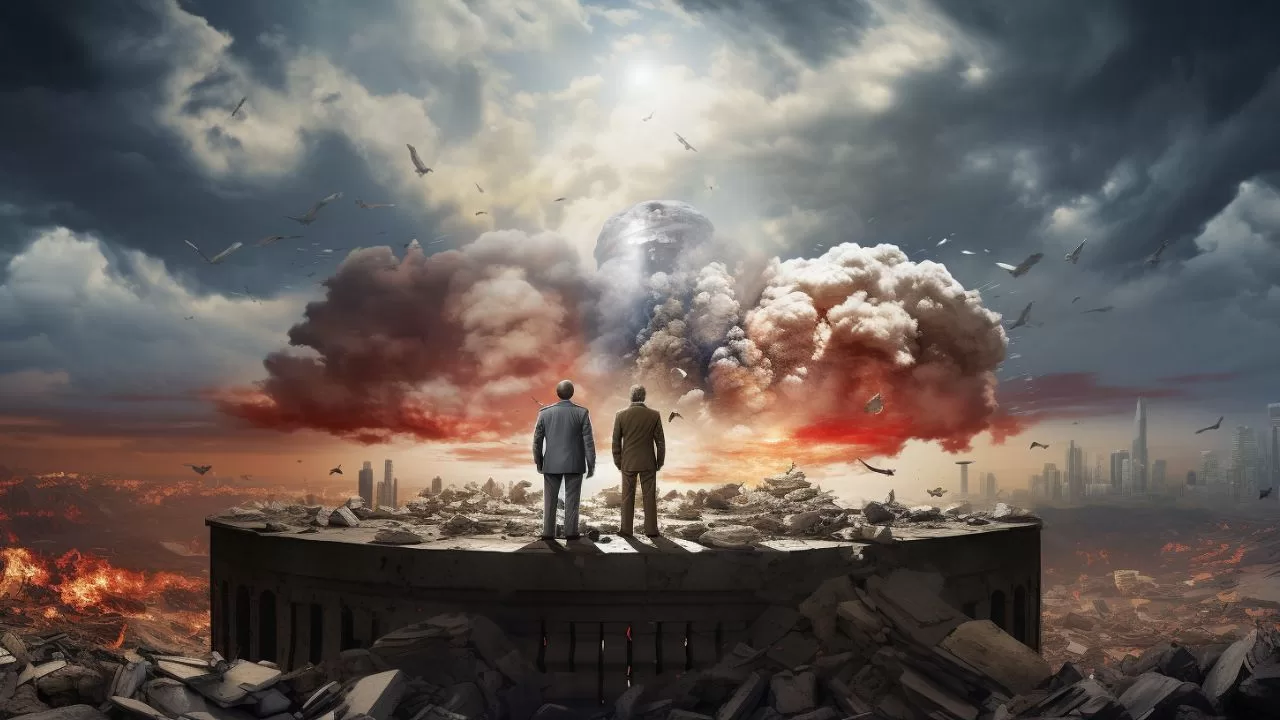






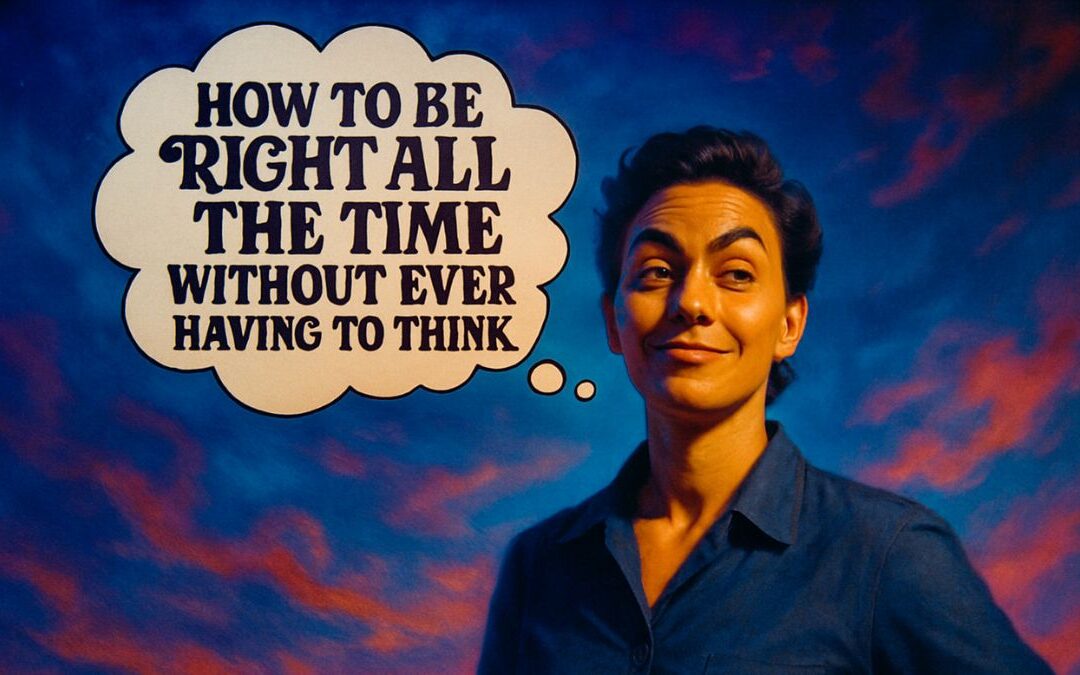
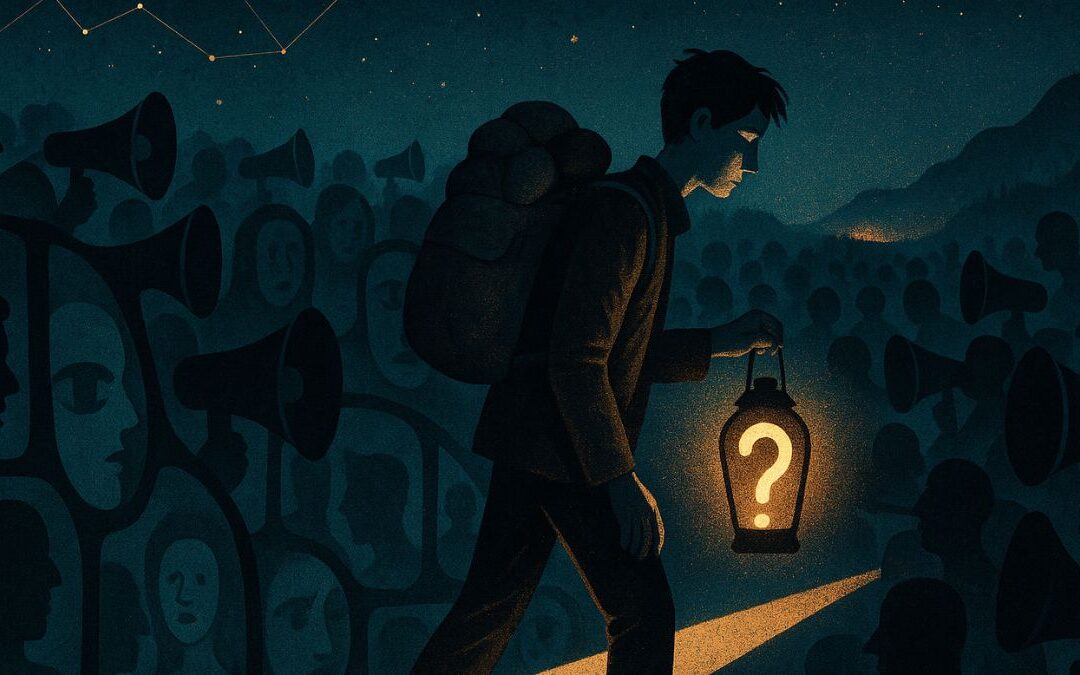
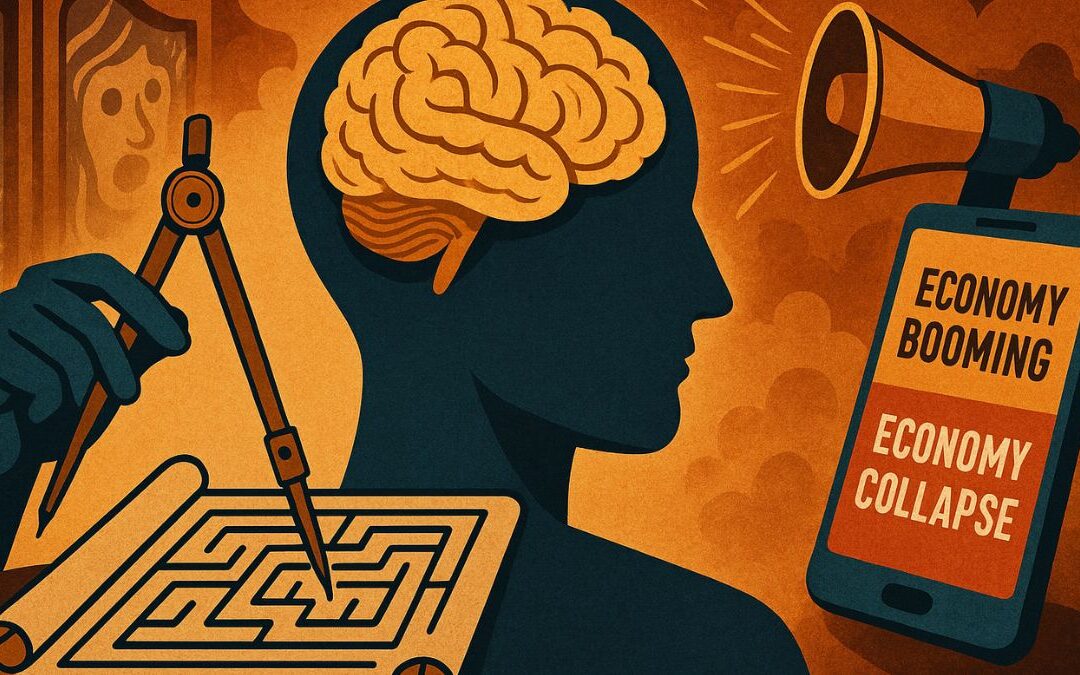
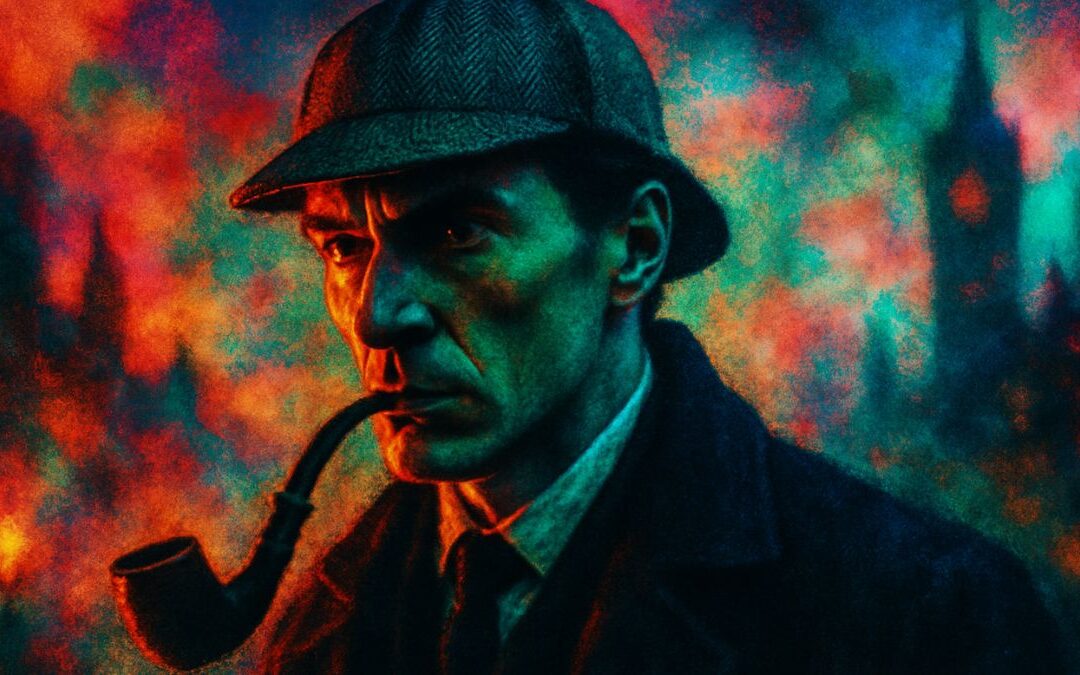
0 Comments
Trackbacks/Pingbacks